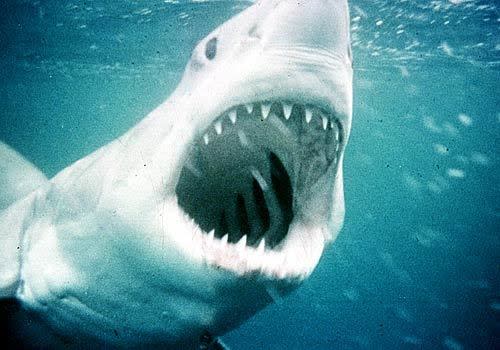Op-Ed: With coronavirus, pretending everything is OK won't make it so

It’s not so bad.
That was the rationale in Barbados in 1647, when British merchants and wealthy planters, seeking to preserve the island colony’s slave trade, shrugged off the threat of the yellow fever epidemic that claimed thousands of lives.
Also not so bad a hundred years later in Boston and other colonial seaports, when authorities played down the prevalence of smallpox so their customers overseas would keep welcoming their ships.
Not so bad in New York and other cities in the 1830s, when President Andrew Jackson, one of Donald Trump’s White House heroes, repeatedly understated a raging cholera pandemic for fear of spoiling the era’s economic boom.
Not so bad, too, in the fictional resort town of Amity Island where, in the blockbuster 1975 film “Jaws,” Mayor Larry Vaughn — worried about the town’s economy — overruled Police Chief Martin Brody’s order to close the beaches after a shark attack.
Mayor Vaughn: “You yell ‘shark’ [and] we’ve got a panic on our hands on the Fourth of July.’’
Chief Brody: “You open the beaches on the Fourth of July, it’s like ringing the dinner bell.’’
Now, 45 years after the release of that quintessential American summer film, authorities in Washington and across the country are rushing to open beaches and businesses out of worries about the economy. And by conveying an implicit “not-so-bad” outlook, they may be ringing the dinner bell for the voracious novel coronavirus that continues to course through the country.
“We depend on the summer people here for our very lives,” Mayor Vaughn said in "Jaws." “You are not going to have a summer unless you deal with this problem,” replied oceanographer Matt Hooper.
Like the city fathers of Amity Island, America is suffering a pandemic of what psychologists call “normalcy bias,” the tendency to minimize disaster in the face of overwhelming evidence to the contrary.
As a result, this looming COVID-19 summer could be the most perilous in our history, though we cannot say we were not warned.
Just the other day, for example, the ousted director of the Biomedical Advanced Research and Development Authority, Rick Bright, told a House subcommittee that, as a result of Washington’s initial “not-so-bad” outlook, “lives were endangered, and I believe lives were lost.”
He then added, “I believe by not telling America the truth or being totally transparent, regardless of where the information was coming from, people were not as prepared as they could have been.”
I have been observing the “not-so-bad” phenomenon since my earliest days as a reporter, when, at age 24, I was assigned by the Buffalo Evening News to cover the Love Canal chemical-contamination crisis in Niagara Falls, N.Y. That environmental catastrophe grew out of a decision that it was safe to construct homes and an elementary school on top of a toxic waste dump. It was only a few years after the premiere of “Jaws,” and I was bewildered by the way political figures seemed to possess an irrepressible impulse to minimize threats.
At the center of the homeowners’ protests that ensued at Love Canal was a 27-year-old housewife who became an eloquent House witness on Capitol Hill, pointedly asking whether health officials had a conflict of interest in administering tests where results suggesting problems could cost them money.
The other day, more than four decades later, I reconnected with Lois Gibbs and asked her to compare the current health threat with the one that led to the evacuation of 800 families from her neighborhood in the late 1970s.
“People in politics always want to maintain calm and say things are not so bad,” she told me. “At Love Canal they kept telling us the chemicals were no bigger a risk than driving a car or crossing the street. We heard all winter that the virus posed no bigger risk than the flu.”
Almost certainly the most consequential not-so-bad error involved the mid-17th century yellow fever outbreak in Barbados, then perhaps the richest part of the British empire. The authorities there covered it up because they wanted English and Dutch ships to keep coming, in large measure to bring slaves to the Americas.
The result: Yellow fever, carried by mosquitoes, spread to Guyana, Brazil, Virginia, Massachusetts and many of the Caribbean islands. Barbados, where death estimates range from 6,000 to 10,000, provides the original Western Hemisphere example of economic motivations overwhelming health considerations.
Much the same phenomenon occurred during the post-World War I influenza pandemic in Philadelphia after 600 sailors there came down with the disease. The city fathers saw the threat but didn’t call off a Liberty Loan Campaign event — a parade with lavish floats, salutes to war widows, a raucous rally for war bonds and parade music conducted by John Philip Sousa himself. Some 200,000 people crowded into Center City. There they stood shoulder to shoulder on the streets. Three days later, 635 Philadelphians fell ill, and two weeks later the death toll exceeded 4,500.
“Politicians often underestimate these things,” said Jason Opal, a McGill University historian who is writing a history of epidemic diseases in the United States with his father, Steven Opal, a clinical professor of medicine at Brown University. “It is a combination of wishful thinking and self-deception …. The Trump administration is extreme in this regard. They simply don’t want to preside over a disaster so they are making believe the threat isn’t there.’’
Making believe, in other words, that things aren’t so bad. But there is a lesson here: Not so bad can be disastrous.
David Shribman, a nationally syndicated columnist, teaches U.S. politics at the Max Bell School of Public Policy at Montreal’s McGill University.
